10 Anti-Pollution Plants That Clean Your Office Air
-
Chris Dosser
- December 20, 2021
If you buy something using the retail links in our articles, sometimes we earn a small affiliate commission. This does not impact the products we recommend.
Houseplants are wonders of nature that will munch up everyday pollutants such as benzene, formaldehyde, ammonia, trichloroethylene, and toluene, which we bring into the home and office everyday in products such as laundry detergents, general-purpose cleaners, air fresheners, and personal hygiene products.
A selection of indoor plants which have been demonstrated to absorb toxins from the air and pull them down through the roots into the soil include:
- Peace Lily (Spathiphyllum)
- Devil’s Ivy (Epipremnum aureum)
- Chinese Evergreen (Aglaonema)
- Spider Plant (Chlorophytum)
- Mother in-laws Tongue (Dracaena trifasciata)
- Weeping Fig (Ficus benjamina)
- Aloe Vera (Aloe barbadensis)
- Areca Palm (Dypsis lutescens)
- Rubber Plant (Ficus elastica)
- Flamingo Lily (Anthurium andraeanum)
Once captured from the atmosphere the toxins are then neutralized by the microbes in the soil. The leaves of the plant are then able to oxygenate the room via respiration, and we breathe in all that lovely oxygen that they have produced – working in harmony together.
Tip: Whilst in pursuit of an natural air cleaner, just be sure to avoid picking up one which is likely to trigger an allergic reaction.
Peace Lily (Spathiphyllum)
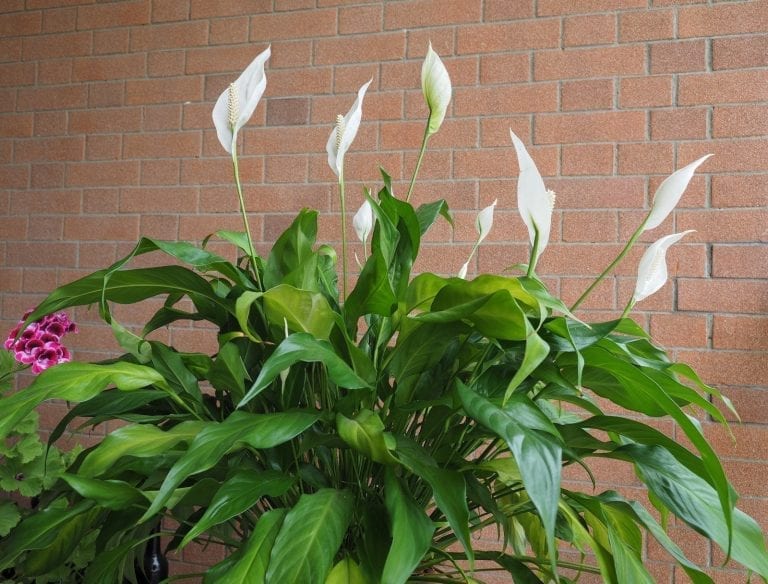
The easy-to-grow, beautifully serene, and appropriately named Peace Lily is our number one anti-pollution houseplant as it not only has big, lush, dark green leaves, but also a gorgeous white flower that unfurls from within the leaves.
This wonderful addition will rid your home of toxins such as benzene and trichloroethylene, both commonly found in detergents, nail polish and remover, glue, ink, and paint.
Devil’s Ivy (Epipremnum Aureum)
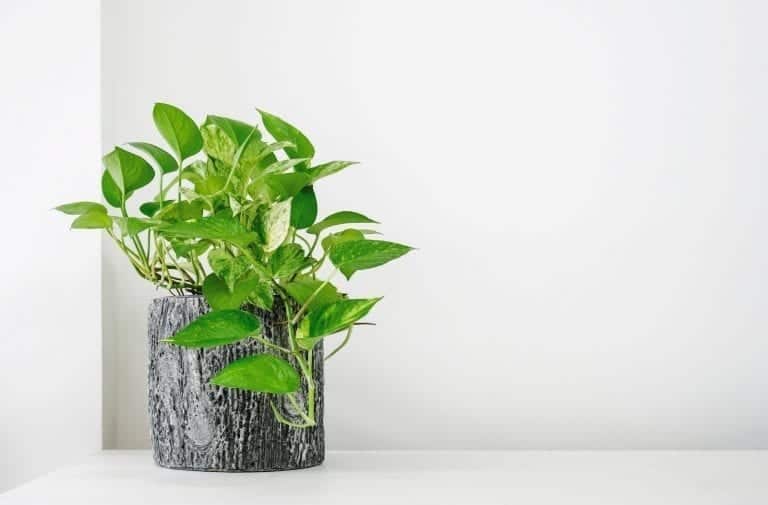
This lovely plant has beautiful variegated, heart-shaped leaves, and it loves to look after the environment – and therefore you! It’s sometimes called “pothos” or “golden pothos”.
This vine-like wonder will remove xylene, benzene, formaldehyde and trichloroethylene from your home. It’s a good, hardy plant which can handle lower levels of light and a degree of neglect, but why would you neglect it when it does so much for you? Just sayin’!
Chinese Evergreen (Aglaonema)
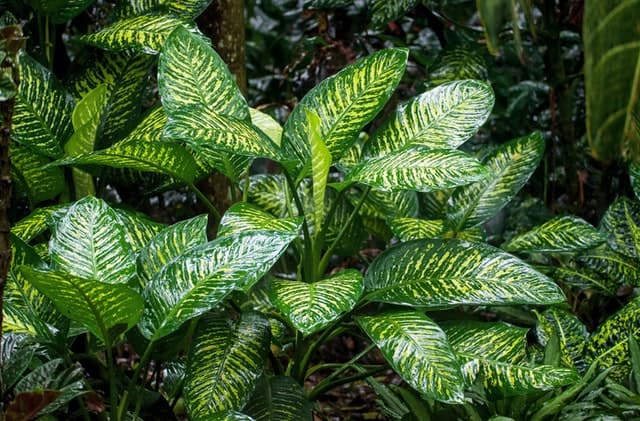
This lush and leafy ornamental comes in many varieties with variegated, plain green, speckled, or even silver leaves. Another easy to care for plant as long as you don’t let it get too cold. Ideally, it should be kept above 60F or between 65-80F is optimal.
The leaves of this evergreen does really well to rid your office of formaldehyde and benzene.
Spider Plant (Chlorophytum)
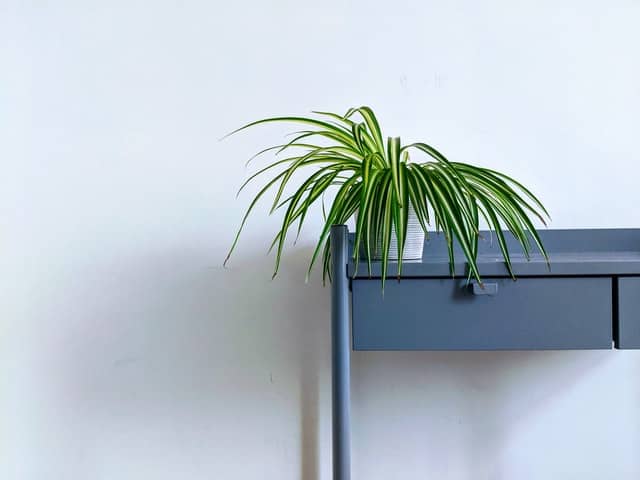
This is a wonderful plant that just keeps giving by producing little babies which you can plant up in separate pots. The leaves are long, striped green and white, and cascade over the edges of the pot.
As well as giving, this plant is great at taking too! I’m talking about all the nasty toxins produced by us within the home such as carbon dioxide, ethyl benzene, and formaldehyde.
Mother In-Laws Tongue (Dracaena Trifasciata)
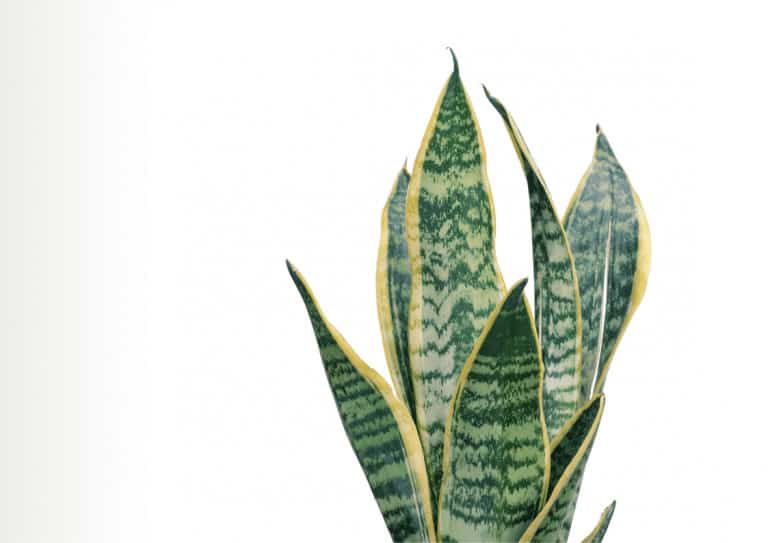
Despite the name, this is one plant you should have in the home for sure. With its lovely long, vertical leaves this houseplant is really easy to look after but be sure not to let it stay too damp – slightly dryer is better.
This powerhouse of a plant will remove carbon dioxide, benzene, formaldehyde, xylene, and toluene.
Just don’t get on the wrong side of this plant, or you will feel the sharp pointed tip of your mother-in-law’s tongue!
Weeping Fig (Ficus Benjamina)
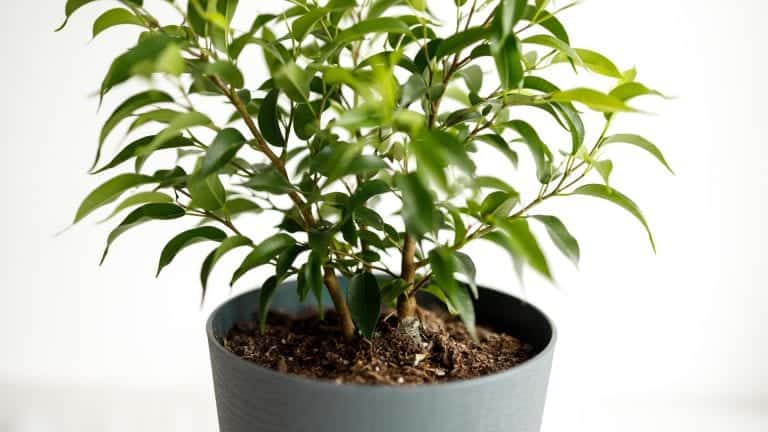
What is there not to love about the humble weeping fig? With its beautiful bushy crown and tumbling leafy branches, it is a joy to behold and can grow up to 10ft tall! But they are not always the easiest plant to keep.
The main thing is to make sure it isn’t exposed to drafts or temperatures below 60F. It loves light but not direct harsh sunlight. If you get it right with a Weeping fig you could well have an elegant and graceful tree in your lounge in no time at all, plus it will mop up the usual suspects such as formaldehyde, xylene, toluene, and trichloroethylene.
Aloe Vera (Aloe barbadensis)

This is one succulent that is a real must-have in the home. It multiplies like a rabbit giving you lots of babies to place in every room, is super-easy to care for, AND aids good sleep!
How? Well, most plants sleep at night and stop their photosynthesis due to lack of daylight, but succulents continue to convert carbon dioxide and release oxygen at night, therefore providing lovely fresh air as you sleep!
As is commonly known, aloe vera also has amazing healing properties for the skin and also the digestion, but it also does a great job of cleansing formaldehyde and benzene from the environment. A must-have in every home!
Areca Palm (Dypsis Lutescens)
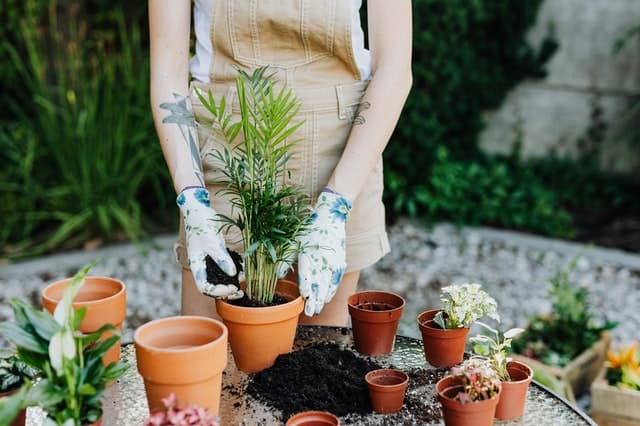
We LOVE this plant! It is so pretty with its delicate fern-like fronds and vibrant green color.
The areca palm adds a touch of class to any room but especially a home office. They can grow to around 7ft tall at an average rate of 8 inches per year. They like to be facing south or south-west with lots of light but not direct sunlight.
This pretty little plant is the best at clearing toluene and xylene from the atmosphere more than any other!
Rubber Plant (Ficus Elastica)
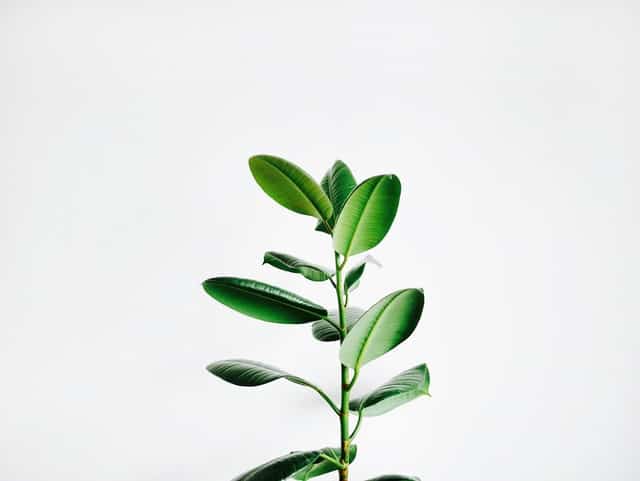
What’s not to love about the good old rubber plant? From an outdoor 50ft tall, sprawling, majestic thick-trunked tree to the humble indoor potted plant found in so many homes, this is a firm favorite. Very easy to look after with bright but indirect light, a good misting with water, and a nice little leaf shine once in a while.
In return for your efforts, the rubber plant will remove trichloroethylene, formaldehyde, carbon monoxide, and benzene from your home. It is also a great converter of carbon dioxide to oxygen leaving the air fresh and pure in your home.
Flamingo Lily (Anthurium Andraeanum)
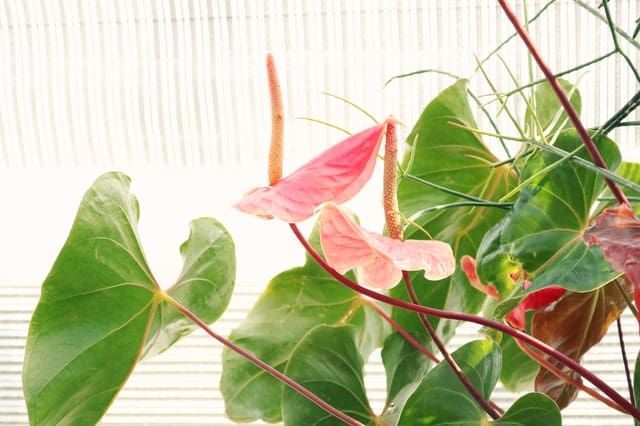
Last, but by no means least, is the beautiful flamingo lily. With its incredibly shiny, almost rubbery red or pink flower and protruding spadix, it’s a really exotic looking plant making it a beautiful addition to any home. Not only is this plant a great looking specimen, but it is fantastic at removing the “big four” – formaldehyde, ammonia, toluene, and xylene. So for a super elegant home purifier, this is the most eye-catching for sure!
So there you have it – 10 of the best and most beautiful of nature’s air purifiers. Be sure to look after them and remember they are continuously working hard to look after you. Enjoy

Chris Dosser
Co-Founder of Eden Indoors
Chris is a self-taught horticulturist with over a decade of experience caring for houseplants and creating lush, thriving indoor oases. He specializes in Monstera, and by self admission has a serious problem with buying and propagating rare indoor plants!
Similar Posts
Are Rubber Plants Toxic To Cats? [Latex Alert!]
Rubber plants are extremely popular houseplants, but do they have the potential to be harmful to our pet felines?
41 Snake Plant Names So Funny, You’ll Struggle To Pick One
Why not give each plant in your houseplant collection their own unique name. Here are a list of funny names that you could give to your Snake plant.



